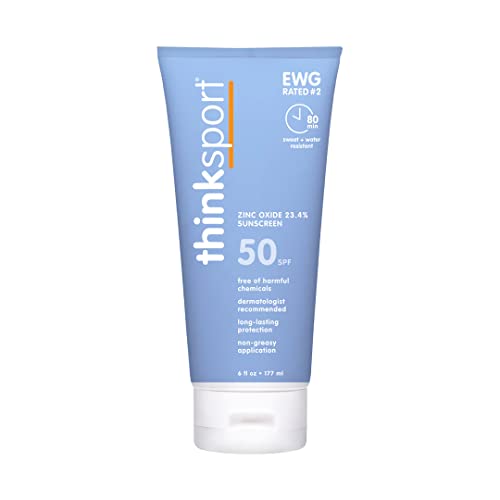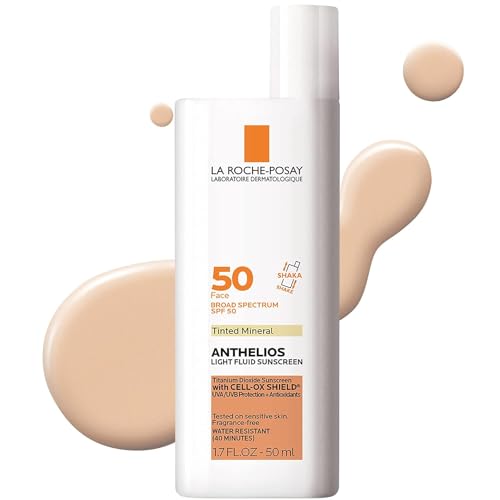Heading to the beach means stepping into a world of fun under the sun, but that fun comes with a side of caution: sun protection is crucial. The harmful UV rays can cause short-term pain like sunburns and long-term damage, including skin cancer. This makes picking the right sunscreen more than a summer routine; it’s a health necessity. There’s a slew of options available, from chemical sunscreens that absorb UV radiation to mineral sunscreens that reflect it away from the skin.
For those with sensitive conditions such as rosacea, the choice becomes even more critical, as the wrong type can trigger flare-ups. Experts recommend sunscreens offering broad spectrum protection, meaning they fend off UVA and UVB rays. So, as you pack your beach bag, you might ask yourself how you ensure your sunscreen provides the most effective shield against the sun’s rays?
More from Glowing Gorgeous: Find out here the Best Silicone-Free Moisturizers And Why Do You Care
Glowing First Glimpse
- Choosing the right sunscreen for the beach means balancing protection, water resistance, and impact on the environment.
- Look for broad-spectrum, water-resistant sunscreens with at least SPF 30 for beach days.
- Don’t forget to reapply every two hours, or immediately after swimming or sweating.
- Embrace products that are kind to your skin and the ocean, opting for reef-safe options whenever possible.
- Top sunblock at the beach is MDSolarSciences Mineral Crème SPF 50 Sunscreen
Navigating SPF: What You Need to Know
Sun Protection Factor (SPF) is more than just a number on your sunscreen bottle; it measures how well the sunscreen can protect the skin against UVB rays, primarily responsible for sunburn and contributing to skin cancer. A common misunderstanding is that the SPF rating directly correlates with the duration of sun protection it offers. However, SPF primarily indicates the level of security, not duration. For instance, SPF 30 doesn’t mean you’re protected for 30 hours. It means you’re protected 30 times more than without sunscreen. Given this, opting for a higher SPF is wise for beach outings or extended sun exposure. Statistics show that sunscreens labeled SPF 50 or higher provide better protection against the sun’s harmful rays.
SPF 30 vs. SPF 50: Making the Right Choice
When choosing between SPF 30 and SPF 50, it’s important to understand their protection levels. While SPF 30 blocks about 97% of UVB rays, SPF 50 blocks approximately 98%. This might seem like a negligible difference, but it can significantly impact your skin’s health, especially during prolonged exposure to the sun, like at the beach. Misconceptions about SPF values often lead people to believe they need less reapplication with higher SPFs. This isn’t the case; all sunscreens should be reapplied every two hours, more often if swimming or sweating. SPF 50 is generally a better choice for those spending extended periods in the sun, offering a slight advantage in protection.
Understanding UVA and UVB Protection
UVA and UVB rays, both parts of the ultraviolet spectrum, have different impacts on the skin. UVB rays are the leading cause of sunburn and play a significant role in developing skin cancer, while UVA rays penetrate the skin more deeply, leading to skin aging and wrinkling and contributing to cancer formation. This highlights the importance of broad-spectrum sunscreens protecting against UVA and UVB rays. When selecting a sunscreen, look for labels that state “broad-spectrum” or “UVA/UVB protection” to ensure your skin is shielded against all harmful UV radiation, not just sunburns from UVB rays.
The Importance of Water Resistance in Sunscreens
When planning a day at the beach or engaging in any water-related activity, grabbing a water-resistant sunscreen is as smart as wearing a hat on a sunny day. Let me break it down for you: not all sunscreens can hold their ground against water and sweat. This is where water-resistant formulas come into play, acting like an invisible shield that stays put, keeping your skin safe from those naughty UV rays even while taking a dip or sweating it out during a beach volleyball match.
Let’s clear up a common mix-up: water-resistant doesn’t mean waterproof. There’s no such thing as a completely waterproof sunscreen. The terms ‘water-resistant’ and ‘very water-resistant’ might sound similar, but they indicate how long the sunscreen can maintain its SPF protection when you’re in water. Generally, water-resistant sunscreens can keep up the fight for about 40 minutes, while very water-resistant types last about 80 minutes in the water. However, remember, once you towel off, you’re stripping some of that protective layer away, so it’s time to reapply.
Speaking of reapplication, it’s not just about doing it; it’s about doing it right. Even if you’re using a high SPF, water-resistant sunscreen, you must reapply it at least every 2 hours and immediately after swimming, sweating, or toweling off. This ensures your skin remains shielded from UV rays throughout outdoor adventures.
Always make it a habit to check the sunscreen label for the duration of water resistance. This small step can make a massive difference in providing your skin with optimal protection. By choosing a sunscreen that suits your water exposure and reapplying as directed, you’re setting yourself up for a day of fun in the sun without worrying about damaging your skin.
Regarding sunscreen for rosacea or sensitive skin, the choice between chemical and physical sunscreens is critical. Physical (mineral) sunscreens, containing ingredients like zinc oxide or titanium dioxide, act as a shield on your skin’s surface, reflecting UV rays away.
This method of sun protection is typically gentler on sensitive, rosacea-prone skin and reduces the likelihood of irritation. Furthermore, mineral sunscreens are less environmentally harmful, making them a considerate choice for the eco-conscious.
Chemical sunscreens, on the other hand, absorb into the skin and then absorb UV rays, converting them into heat, which is then released from the skin. They’re known for their quick absorption and less visible residue, making them a favorite for those with oily or acne-prone skin. However, chemical sunscreens might exacerbate redness or irritation for individuals with rosacea or sensitive skin types. It’s vital to weigh your skin concerns and the environmental impact of your sunscreen choice before deciding.
More from Glowing Gorgeous: Find out here Hyram’s Recommended Face Sunscreens For The Summer
Top Picks for Ultimate Sun Protection at the Beach
When it’s time to hit the beach, ensuring your skin stays protected from the harsh effects of UV rays is vital, especially for those with rosacea-prone skin. We’ve looked closely at three sunscreens that have your back: MDSolarSciences Mineral Crème SPF 50 Sunscreen, and As for Oars + Alps Hydrating SPF 50 Sunscreen Spray. Here’s the scoop on each.
MDSolarSciences Mineral Crème SPF 50 Sunscreen is a heavyweight for sun protection without causing irritation or redness. Non-irritating even for very sensitive skin. Perfect for everyday & outdoor sun exposure. Its mineral-based formula is gentle on sensitive skin, offering broad-spectrum protection without any fragrance or parabens that can aggravate sensitive skin or rosacea. This sunscreen sits on top of the skin, reflecting UV rays away, making it a suitable option for folks mindful of their skin condition.
As for Oars + Alps Hydrating SPF 50 Sunscreen Spray, it proves that you don’t have to break the bank for effective sun protection. This option offers broad spectrum protection against UVA and UVB rays, is water-resistant, and works hard to safeguard your skin during those long hours at the beach. Its non-greasy formula ensures you remain comfortable and protected, making it an excellent choice for the whole family.
Reviewer comments often point out how these formulas do not aggravate rosacea symptoms or irritate the skin, which speaks volumes for their suitability for sensitive and rosacea-prone skin.
Tips for Application and Reapplication
Getting the most out of your sunscreen isn’t just about the product; it’s also about how you apply it. A good rule of thumb for total body coverage is to use about an ounce of sunscreen – think a shot glass full. This ensures you’re applying enough to achieve the SPF protection advertised on the bottle.
But it’s not just about that first application. Reapplying sunscreen every two hours and immediately after swimming or sweating is crucial to maintain protection. Remember, water-resistant doesn’t mean waterproof; even the best sunscreens can wash off or lose efficacy after a dip in the ocean or a beach volleyball session. By keeping these tips in mind and ensuring you use enough products effectively, you’re taking an important step in protecting your skin from sun damage and potential rosacea flare-ups.
When we talk about protecting our faces from the sun, the debate often turns to whether to use sunscreen or sunblock. It’s essential to know the difference—sunscreen absorbs UV rays using chemical filters, while sunblock, also known as physical sunscreen, reflects them away from the skin. For those of us with sensitive skin or rosacea, finding a product that doesn’t provoke a flare-up while offering ample protection is key. Mineral or physical sunscreens are generally recommended for rosacea-prone skin because they contain zinc oxide or titanium dioxide, which are less likely to irritate than the chemicals in traditional sunscreens.
For facial application, look for formulations labeled “non-comedogenic,” which means they won’t clog pores, a common concern for those with oily or acne-prone skin. Dermatologist-recommended options often include brands like Dermalogica Protection 50 Sport SPF50 (5.3 Fl Oz) Broad Spectrum Sunscreen Lotion without causing additional irritation to sensitive or rosacea-prone skin.
Integrating sun protection into your skincare and makeup routine doesn’t have to be a hassle. Opt for a moisturizer or BB cream with SPF for a 2-in-1 solution that evens skin tone while protecting against UV rays. Dermalogica Protection 50 Sport SPF50 (5.3 Fl Oz) Broad Spectrum Sunscreen Lotion. Applying a thin layer of sunscreen under your foundation is a smart move if you use makeup. Take a few minutes to absorb fully before moving on with your makeup application.
Eye irritation is a common complaint with sunscreens, especially chemical ones. To avoid this, seek out products specifically formulated for facial sensitivity, such as EltaMD UV Sport Body Sunscreen, SPF 50 Sport Sunscreen Lotion. This product is designed with the delicate eye area in mind, providing robust protection without the sting.
In summary, consider your skin type and sensitivity when choosing between sunscreen and sunblock for your face. Mineral sunscreens are typically safer for those with rosacea or easily irritated skin. Look for non-comedogenic, dermatologist-recommended options and consider incorporating sun protection into your skincare and makeup routine for seamless application. Above all, don’t forget about the delicate eye area, and opt for products designed to minimize irritation.
Reef Safety: Protecting Our Oceans
For those who love to spend time in the ocean, selecting a reef-safe sunscreen is an act of responsibility toward preserving marine ecosystems. Ingredients found in many chemical sunscreens, such as oxybenzone and octinoxate, have been linked to coral bleaching and damage to aquatic life, leading to bans in locations like Hawaii and Key West. Opting for reef-safe sunscreens like Thrive Bodyshield SPF 50 and Thinksport Sunscreen SPF 50+ can make a significant difference.
Thrive Bodyshield SPF 50 is effective for sun protection with broad spectrum coverage and supports skin repair through its plant-based composition. This makes it a standout choice for sensitive skin and environmentally conscious consumers.
Thinksport Sunscreen SPF 50+ offers a high level of UVA and UVB protection without the use of harmful chemicals that affect marine life. Its water resistance and easy application make it an excellent choice for active and eco-aware individuals.
Choosing sunscreens free from harmful components to marine life, like oxybenzone and octinoxate, helps protect our oceans while ensuring your skin stays safeguarded against UV radiation. It’s a simple step that can significantly impact the environment.
Conclusion: Embrace the Sun Safely
Selecting the ideal sunscreen for days spent frolicking at the beach is a nuanced affair, especially for individuals grappling with sensitive skin or rosacea. It’s crucial to prioritize products offering broad-spectrum protection against UVA and UVB rays while ensuring they’re gentle on the skin. We discussed the benefits of mineral over chemical sunscreens for those with rosacea-prone skin, highlighting the former’s propensity to cause less irritation and provide a physical barrier against UV radiation. Yet, no sunscreen can offer full protection without regular reapplication, particularly after swimming or sweating, underscoring the necessity for water-resistant options with a sufficient Sun Protection Factor (SPF).
The environmental impact of our sunscreen choices must be noticed. As responsible consumers, opting for reef-safe formulations helps protect marine ecosystems from the adverse effects of certain sunscreen ingredients. Remember, our collective health and that of our planet are intertwined, making conscientious product selection all the more significant.
Finally, while protecting our skin from the potential harms of sun exposure – including exacerbated rosacea symptoms, skin redness, and the risk of skin cancer – it’s equally important to savor the myriad benefits of spending time in the sunshine. Sunlight is instrumental in vitamin D synthesis, mood improvement, and fostering a connection with nature. By choosing the proper sun protection and adhering to safe sun practices, we empower ourselves to enjoy these benefits without compromise.
Sources:
– Sun protection: Appropriate sunscreen use – Harvard Health
– Sun Safety | Skin Cancer | CDC


 MDSolarSciences Mineral Crème SPF 50 Sunscreen for Face – Water-Resistant,...
MDSolarSciences Mineral Crème SPF 50 Sunscreen for Face – Water-Resistant,... Oars + Alps Hydrating SPF 50 Sunscreen Spray, Infused with Vitamin C and...
Oars + Alps Hydrating SPF 50 Sunscreen Spray, Infused with Vitamin C and... Dermalogica Protection 50 Sport SPF50 (5.3 Fl Oz) Broad Spectrum Sunscreen...
Dermalogica Protection 50 Sport SPF50 (5.3 Fl Oz) Broad Spectrum Sunscreen... EltaMD UV Sport Sunscreen Lotion, SPF 50 Water Resistant Sunscreen Up to 80...
EltaMD UV Sport Sunscreen Lotion, SPF 50 Water Resistant Sunscreen Up to 80... Thrive Natural Care Body Mineral Sunscreen SPF50 - Water Resistant Reef Safe...
Thrive Natural Care Body Mineral Sunscreen SPF50 - Water Resistant Reef Safe... Thinksport SPF 50+ Mineral Sunscreen – Safe, Natural Sunblock for Sports &...
Thinksport SPF 50+ Mineral Sunscreen – Safe, Natural Sunblock for Sports &...
 La Roche-Posay Anthelios Melt-In Milk Body & Face Sunscreen SPF 60, Oil Free...
La Roche-Posay Anthelios Melt-In Milk Body & Face Sunscreen SPF 60, Oil Free... La Roche-Posay Anthelios Tinted Sunscreen SPF 50, Ultra-Light Fluid Broad...
La Roche-Posay Anthelios Tinted Sunscreen SPF 50, Ultra-Light Fluid Broad... innisfree Daily UV Defense Sunscreen Broad Spectrum SPF 36 Face Lotion, 1.69 Fl...
innisfree Daily UV Defense Sunscreen Broad Spectrum SPF 36 Face Lotion, 1.69 Fl...
Comments